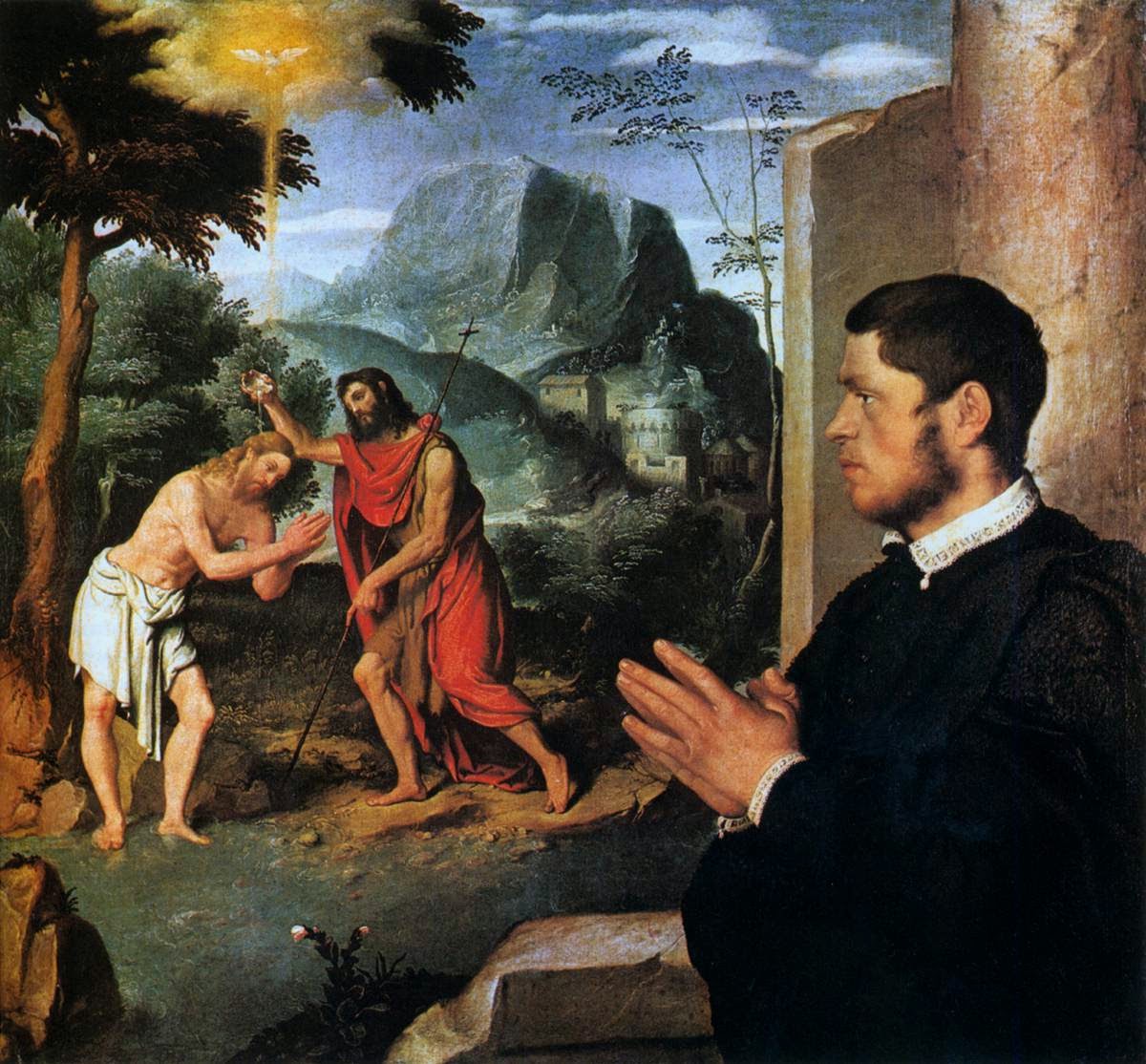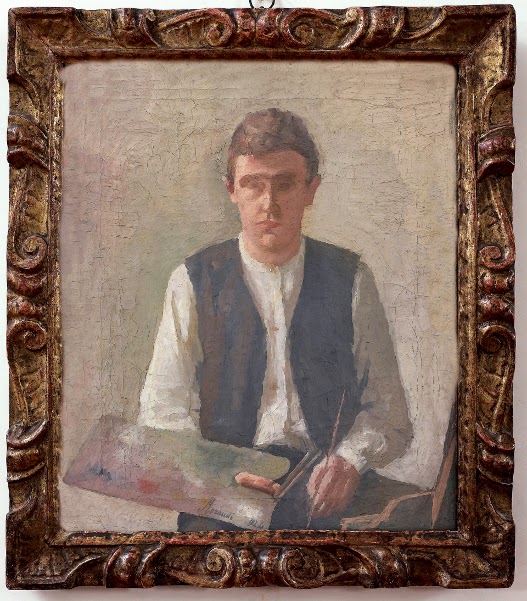En route for the opening of my exhibition in Italy, it occurred to me to jot down the basics, so here I am on the plane writing this blog post on my phone (sorry no hyperlinks ) on how I went about preparing the show.
First: start painting the paintings. Yes that's obvious, but note that I wrote "start". I think that an exhibition should be planned when I know I am onto something in my work, when the infamous "body of work" is taking form and I am confident I am going to produce a satisfying number of pictures.
As the idea of a future exhibition starts shaping in my head, I notice I can hone in the theme and develop it with more focus. I learn about the common thread that links the painting together, take it up and start following it as a life line that guides me out of a maze.
Planning a show takes months so it's better to get things going much before the work is completed: that deadline is an important goal that sustains and motivates my time in the studio.
Paint the paintings, I said: one of the first things I thought of was how many, and how large. In the case of "Villaggi" I had a given space that I knew ( it's my third exhibition with Elle Arte and the first one in which I have the whole gallery). I wanted to have a good number of works but not to overcrowd the rooms, so I settled on about 25 works of different sizes. That number seem to be enough to articulate a discourse without ending up being repetitive.
I wanted some paintings large enough ( with frames they go up to 120x150cm) that could really affect the atmosphere in a room as well as many small ones where the ideas are condensed.
I think it is fair to offer work at different price levels. In my experience there are collectors who love the work and collectors who love the work and also have a new house with a lot of wall space.
A folder with unframed works on paper ( matted, labelled and wrapped in clear plastic) adds variety, is a cheaper buying option and showcases technical skills in different media.
"Villaggi" is a still life show but I wanted to include two works that function a bit like backstage footage and interrupt the quasi obsessiveness of the theme: so I purposedly painted a self portrait while arranging a still life ( also a connection with my other work ) and a study of a landscape by Bellini.
Where and when
I have an ongoing relationship with Elle Arte, a well established gallery in Palermo with a high professional standard. Laura, the owner, shows my work regularly so she was the first one I called when I made the decision to have a solo show. This also meant getting in touch with other galleries I work with to let them know they wouldn't get much work from me in the following months and also deleting "call for entries" to art competitions from my inbox so that I could build up the work faster.
I originally set a date for 2015 but as a closer slot became available I accepted to speed things up. I think October and November are the best time to show in a city as well as spring months.
If you are planning a show somewhere don't forget to check out the town's calendar. In London, for example, opening on Halloween night during the school holidays wouldn't be a great idea, while I was told that in Palermo this is a time of the year when families get together and stay in town.
In Rome a few years ago I was showing during the local film festival so it was impossible to have a press release published because local arts pages were all clogged with reviews. Research in advance !
Photographing and framing
In the meantime, work goes on in the studio. As I finish paintings, I photograph them and file the images. ( also have a list of paintings with measures on a piece of paper, you'd need the info a countless number of times, it's quicker !)
I normally take photos outside on an overcast day and adjust images in Photoshop. If I were to sell giclee prints I'd definitely have them done professionally, but for postcards, online posts and a small catalog I'm perfectly happy with my own pics.
Normally I order natural wood frames online and paint them myself. I have approached the framer and obtained a small discount seen the number of frames I order from them.
I must say that I probably don't save much money by doing the work on my own but I enjoy it very much. Most of my frames are gray and/or white: it's good to find one or two colours that suite all the paintings so the show has a unified and tidy appearance.
I prime the natural wood and paint two or three coats of matte emulsion, some times adding a little depth by painting coats of different tones and sanding exposing the colour underneath.
I finish off by sanding with fine steel wool and polishing with wax.
I use z-shape clips to fit the canvas in the frame and attach gummed tape to the back.
I fit a string behind the work for hanging, but for medium and small paintings I also include a single triangular fitting because the string can prove a real nightmare if the gallery has a chain system for hanging: it's impossible to align the paintings !
I like to have control of my frames however this time I decided to send my smaller works to be framed in Italy as I wanted a slightly different mould that the online supplier didn't have.
I recently visited a small bottega in Tuscany ( no website !) that does fantastic job at a better price and I also figured out it would cost me less to ship small works on panel from UK to Tuscany, frame them at Italian price with bulk discount and ship them on to Sicily. Check local services !
Packing and Shipping
If you have read until now you'll know I do my best to keep costs down. So I did not build crates, I don't know how to do it, don't have the space nor the tools, but
I'm happy to say that all my works arrived safely to Palermo.
For medium size works I purchased telescopic sturdy boxes that are intended for moving mirrors ( on Amazon), and I saved the large flat boxes in which my frames arrived. I used a lot of cling film and bubble wrap and probably ingested half a roll of brown tape ( not enough hands for scissors!).
I bought cardboard corners that I fit onto every painting protecting the frame with cling film. I then sandwiched bubble wrap between paintings in similar sizes and tied them together very firmly with wide packing cling film so that they couldn't slide, then more bubble wrap around the whole thing and in the box very clearly marking "Do not stack" and using "Fragile" tape.
I booked the shipping with an online shipping comparison website and chose a land service that turned out rather cheap. For a show a couple of years ago the gallerist had secured a sponsorship for the shipping by including their logo in the catalogue, worth a try.
Advertising
Most of the job locally is done by the gallery, including securing press coverage by sending a press release to local newspaper. Here in Palermo hard copy works: the gallery invested in postcard invitations to send their clientele and leave in book shops, cafes etc.
Social networking is useful to remind people about the event and to send more extensive information about the show.
I sent a newsletter ( using Mailchimp) to all my italian contacts even if they live elsewhere. You never know, people have spread the word and I'm expecting some extra guests who are friends of friends.
Catalogue
A catalogue is an important record: nowadays there's no need to invest a large sum to have enough copies for everyone. An online Print on Demand service allows you to only print a few copies that can be given to the best collectors and to potential or actual galleries.
I asked an artist friend, James Bland, who is both very articulate and familiar with my work, to write a piece that I have then translated in Italian.
Again, I did a little homework to keep costs down. I originally composed the whole catalogue with a software from Blurb but I also asked for a quote to a local printer in Sicily that came out much cheaper. I uploaded my draft on the Blurb website and bought a digital copy.
I then showed it to the Sicilian printer to show him how I wanted it ( too complicated to compose again with a new software ). I then optimised all the image files for printing, converting them to CMYK and uploaded them on Dropbox, and he put the catalogue together. Again check the locals !
I also uploaded all the images and the text on a Tumblr blog: I chose Tumblr because the images appear very large.
I included a link on my newsletter for people to see the whole catalogue online.
Opening
I have spoken with my (poor!) husband at length about the work, "rehearsing" a bit of narrative about the paintings. It's important to memorise something coincise, coherent and interesting to say: you don't want to be caught by surprise and stutter something silly to a good collector ( yes that happened to me).
At this point I can say I did my best and I only want to enjoy my time in Palermo.
The plane is landing... I can't wait until tomorrow !













-it.svg.png)


_-_Google_Art_Project.jpg)


















































